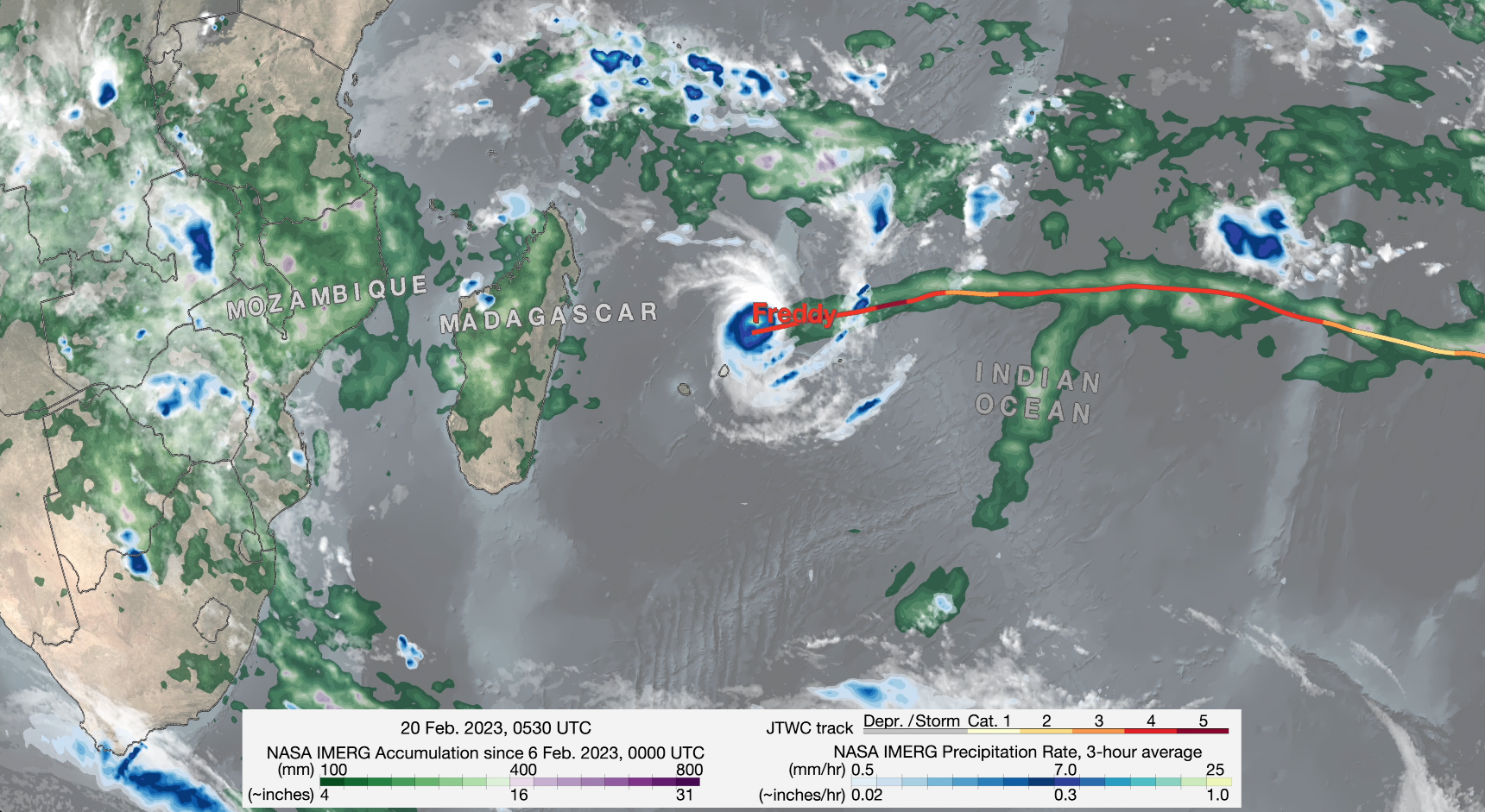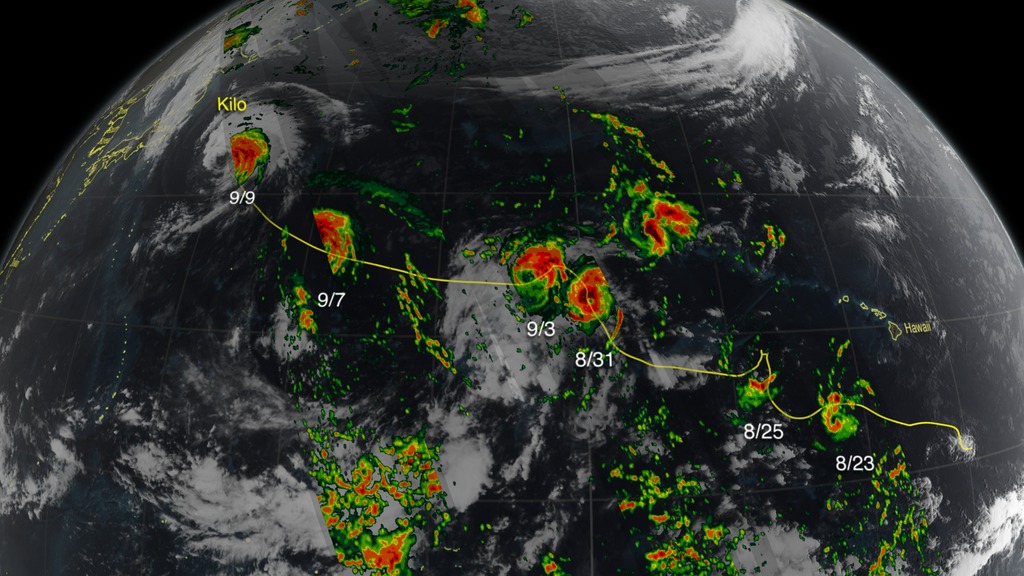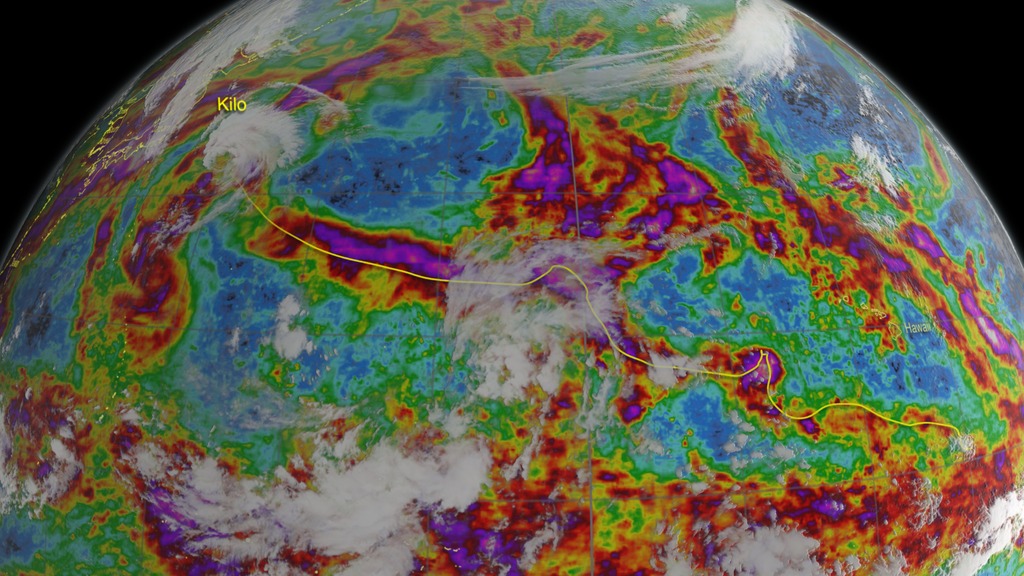GPM Gets a Ton of Kilo
The Global Precipitation Measurement (GPM) mission core satellite provided many views of Tropical Cyclone Kilo over its very long life. GPM is a satellite co-managed by NASA and the Japan Aerospace Exploration Agency that has the ability to analyze rainfall and cloud heights. GPM was able to provide data on Kilo over its 21 day life-span.
The GPM core observatory satellite flew over Kilo on August 25, 2015 at 0121 UTC as it approached Johnston Atoll and found that rainfall intensity had recently increased and the tropical depression's storm tops were very tall. GPM's Dual-Frequency Precipitation Radar (DPR) discovered that rain was falling at a rate of almost 65 mm (2.6 inches) per hour and storm tops were measured at altitudes of over 15.4 km (9.5 miles)
Kilo was born in the Central Pacific Ocean on August 21, became a hurricane, crossed the International Dateline and was re-classified as a Typhoon and finally became extra-tropical on September 11 off Hokkaido, Japan, the northernmost of Japan’s main islands.
Credits
Please give credit for this item to:
NASA's Goddard Space Flight Center
-
Animator
- Ryan Fitzgibbons (USRA)
-
Visualizer
- Alex Kekesi (Global Science and Technology, Inc.)
-
Scientist
- George Huffman (NASA/GSFC)
-
Narrator
- George Huffman (NASA/GSFC)
Release date
This page was originally published on Thursday, September 17, 2015.
This page was last updated on Wednesday, May 3, 2023 at 1:49 PM EDT.
Series
This visualization can be found in the following series:Tapes
This visualization originally appeared on the following tapes:-
GPM Gets a Ton of Kilo
(ID: 2015074)
Wednesday, September 16, 2015 at 4:00AM


